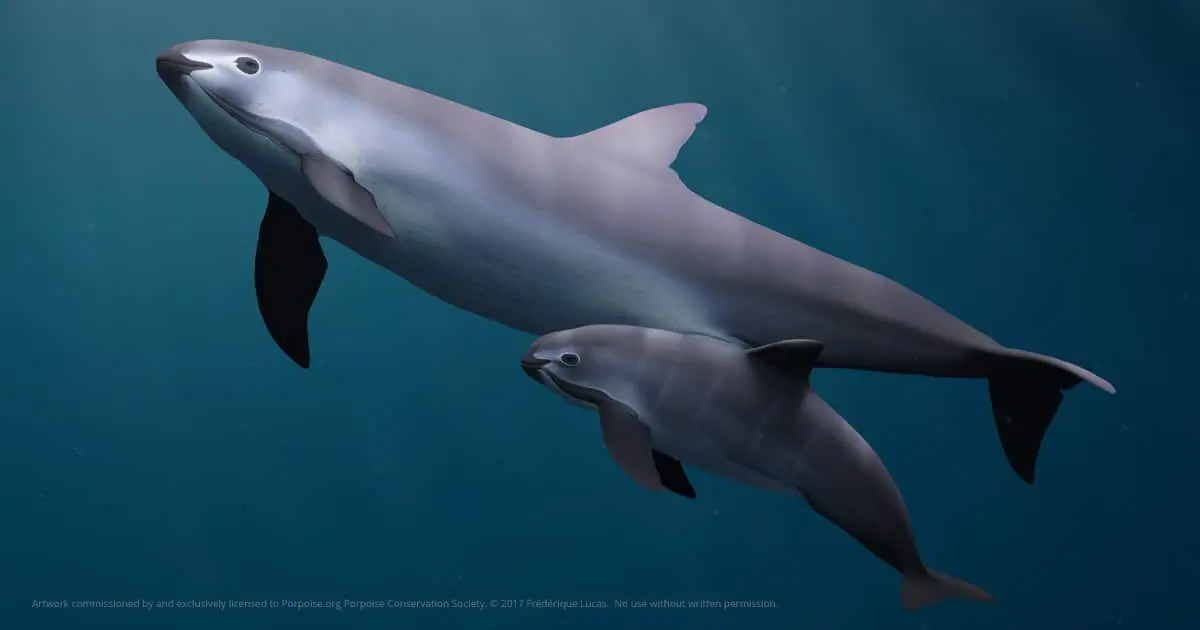The Vaquita: The World's Rarest Animal and Our Efforts to Save It
The rarest animal in the world is considered to be the Vaquita, a small porpoise found in the Gulf of California, Mexico. The population of Vaquita is estimated to be less than 30 individuals, making it the most endangered marine mammal in the world. The main threat to their survival is accidental entanglement in fishing gear. Conservation efforts, including a ban on gillnet fishing in the vaquita's habitat, have been implemented to try to save the species from extinction.
/https://tf-cmsv2-smithsonianmag-media.s3.amazonaws.com/filer_public/5c/f3/5cf3e81a-c3dd-4c55-ad91-c4a7767b0612/phocoena_sinus.jpg) |
| A close-up of a vaquita's face shows its distinctive dark circles around the eyes. |
The Vaquita, a small porpoise found in the Gulf of California, Mexico, is considered to be the rarest animal in the world. With an estimated population of fewer than 30 individuals, the Vaquita is the most endangered marine mammal on the planet.
The main threat to the survival of the Vaquita is accidental entanglement in fishing gear, specifically gillnets. These nets, which are used to catch fish, can trap and drown the Vaquita. To save the species from extinction, conservation efforts have been implemented, including a ban on gillnet fishing in the Vaquita's habitat.
In addition to the ban on gillnet fishing, other conservation efforts have been put in place to protect the Vaquita. These include the creation of a marine protected area in the Gulf of California, where the Vaquita lives, as well as increased patrols to enforce the ban on illegal fishing.
Despite these efforts, the Vaquita population continues to decline. We must continue to work towards the protection and conservation of this species, as well as raise awareness about the Vaquita and the threat it faces.
As a society, we have a responsibility to protect and conserve endangered species like the Vaquita. By working together and implementing effective conservation efforts, we can help ensure that the Vaquita and other endangered species have a chance to survive and thrive.
In conclusion, The Vaquita is a unique and precious species, and we must save it before it disappears forever. Support the conservation efforts by spreading awareness, and together we can make a difference for the future of the Vaquita.
 |
| A group of vaquitas swimming together in the Gulf of California, surrounded by clear blue water. |
the circle of life:
The Vaquita has a unique and fragile life cycle. Female Vaquita reaches sexual maturity at around 5-6 years of age and has a pregnancy period that lasts around 12 months. After giving birth, they have a lactation period of around 12 months. The calf stays close to the mother for around two years, after which it becomes independent.
Diets:
The Vaquita is a small porpoise that lives in the Gulf of California, Mexico. Their diet primarily consists of small fish, such as croaker, which is abundant in their habitat. They are known to have a preference for areas with high concentrations of these fish. They also consume squid and octopus, which are also found in their habitat.
 |
| A team of conservationists on a boat, searching for vaquitas in the wild to track and protect them. |
The Vaquita is known to have a low reproductive rate, with females giving birth to only one calf every two years. This slow reproductive rate, combined with the threats to their survival, makes the Vaquita a highly endangered species.
The Vaquita's habitat is located in the northern Gulf of California, Mexico, and is characterized by shallow, warm waters. They are known to have a preference for areas with high concentrations of small fish, such as croaker, which they feed on.
Due to the accidental entanglement in fishing gear, the Vaquita population has been in decline for several decades, and their numbers have become critically low. Conservation efforts, including a ban on gillnet fishing in the Vaquita's habitat, have been implemented to save the species from extinction. Unfortunately, despite these efforts, the Vaquita population continues to decline.
It's crucial to understand the Vaquita's life cycle and habitat needs to protect them and to also increase the awareness of the population about the importance of preserving this species. The Vaquita is a unique and precious species, and we must save it before it disappears forever.
What kills vaquitas?
The main threat to the survival of the Vaquita, a small porpoise found in the Gulf of California, Mexico, is accidental entanglement in fishing gear, specifically gillnets. These nets, which are used to catch fish, can trap and drown the Vaquita.
Gillnets are a type of fishing gear that consists of a wall of vertical mesh panels that are suspended in the water column. When fish swim into the mesh, their gills become entangled, and they are unable to escape. Vaquitas, like other small cetaceans, are highly susceptible to drowning when entangled in these nets.
Fishing for totoaba, an endangered fish species also found in the Gulf of California, is one of the main reasons for the use of gillnets in the Vaquita's habitat. The illegal trade of totoaba swim bladders, which are highly valued in some Asian markets for their supposed medicinal properties, has led to increased fishing pressure on totoaba, and in turn, has led to increased accidental entanglement of Vaquitas in gillnets.
Conservation efforts have been implemented to try to save the Vaquita from extinction, including a ban on gillnet fishing in the Vaquita's habitat, and increased patrols to enforce the ban on illegal fishing. Despite these efforts, the Vaquita population continues to decline.


1 Comments